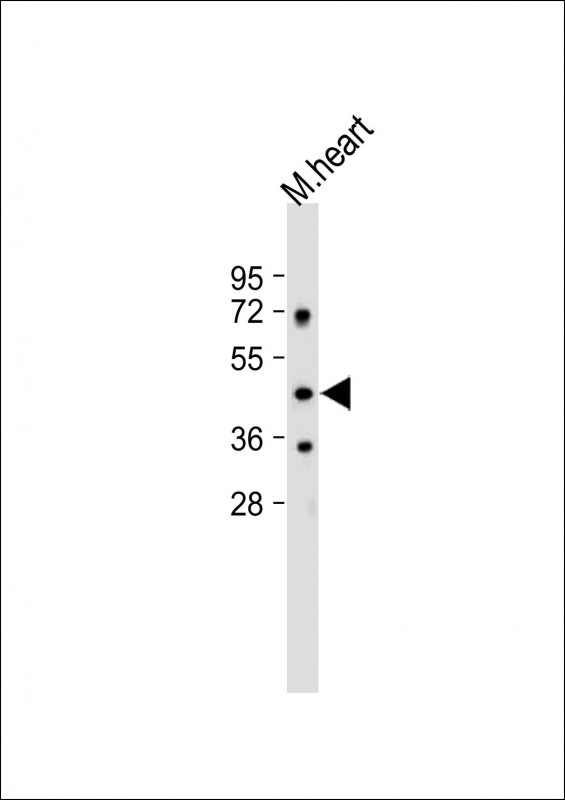

| WB | 咨询技术 | Human,Mouse,Rat |
| IF | 咨询技术 | Human,Mouse,Rat |
| IHC | 咨询技术 | Human,Mouse,Rat |
| ICC | 技术咨询 | Human,Mouse,Rat |
| FCM | 咨询技术 | Human,Mouse,Rat |
| Elisa | 咨询技术 | Human,Mouse,Rat |
| Aliases | Patatin-like phospholipase domain-containing protein 3, Acylglycerol O-acyltransferase, 231-, Adiponutrin, Calcium-independent phospholipase A2-epsilon, iPLA2-epsilon, PNPLA3, ADPN, C22orf20 |
| Entrez GeneID | 80339 |
| WB Predicted band size | 52.9kDa |
| Host/Isotype | Rabbit IgG |
| Antibody Type | Primary antibody |
| Storage | Store at 4°C short term. Aliquot and store at -20°C long term. Avoid freeze/thaw cycles. |
| Species Reactivity | Human, Mouse |
| Immunogen | This PNPLA3 antibody is generated from rabbits immunized with a KLH conjugated synthetic peptide between 109-137 amino acids from the N-terminal region of human PNPLA3. |
| Formulation | Purified antibody in PBS with 0.05% sodium azide. |
+ +
以下是关于PNPLA3 (N-term)抗体的3篇参考文献,包含文献名称、作者及摘要概括:
1. **"Patatin-like phospholipase domain-containing protein 3 and liver disease"**
*作者:Romeo S, Kozlitina J*
摘要:该研究探讨了PNPLA3基因变异(如I148M)与非酒精性脂肪肝病(NAFLD)的关联。文中使用PNPLA3 (N-term)抗体进行Western blot分析,验证了突变型与野生型蛋白在肝组织中的表达差异,并揭示了其在脂代谢中的作用。
2. **"Characterization of PNPLA3 antibodies for immunohistochemical localization in human tissues"**
*作者:Li JZ, Huang Y*
摘要:本研究评估了多种PNPLA3抗体的特异性,包括针对N端的抗体。通过免疫组化技术,作者证实该抗体可特异性标记肝细胞中的PNPLA3蛋白,并发现其在脂肪变性组织中的表达显著升高。
3. **"Regulation of PNPLA3 by obesity and glucose in human hepatocytes"**
*作者:Pirazzi C, Valenti L*
摘要:研究利用PNPLA3 (N-term)抗体进行免疫荧光和Western blot实验,发现高糖和高胰岛素环境可上调肝细胞中PNPLA3的表达,提示其在代谢应激中的调控机制。
如需具体文献来源或补充更多内容,建议通过PubMed或Google Scholar以关键词“PNPLA3 N-terminal antibody”进一步检索。
The PNPLA3 (patatin-like phospholipase domain-containing protein 3) gene encodes adiponutrin, a lipid-metabolizing enzyme predominantly expressed in the liver and adipose tissue. The PNPLA3 (N-term) antibody specifically targets the N-terminal region of the PNPLA3 protein, which contains the catalytic patatin-like phospholipase domain critical for its enzymatic activity. Research on PNPLA3 has gained prominence due to its strong association with non-alcoholic fatty liver disease (NAFLD), non-alcoholic steatohepatitis (NASH), and liver fibrosis. A common genetic variant (rs738409. I148M) in PNPLA3 is linked to increased hepatic lipid accumulation and disease progression.
The N-terminal antibody serves as a key tool for studying PNPLA3's expression, localization, and function in metabolic pathways. It enables detection of both wild-type and mutant isoforms (e.g., I148M), as the mutation occurs in the C-terminal region. Studies using this antibody have revealed PNPLA3's dual role in lipid hydrolysis and synthesis, though its precise mechanisms remain under investigation. Its hepatic upregulation under insulin-resistant conditions and dietary carbohydrates highlights its metabolic relevance. The antibody is widely employed in Western blotting, immunohistochemistry, and immunofluorescence to explore tissue-specific expression patterns and regulatory mechanisms in disease models. Ongoing research focuses on how PNPLA3 interactions influence lipid droplets, inflammatory responses, and fibrosis, making this antibody crucial for elucidating NAFLD pathogenesis and therapeutic development.
×